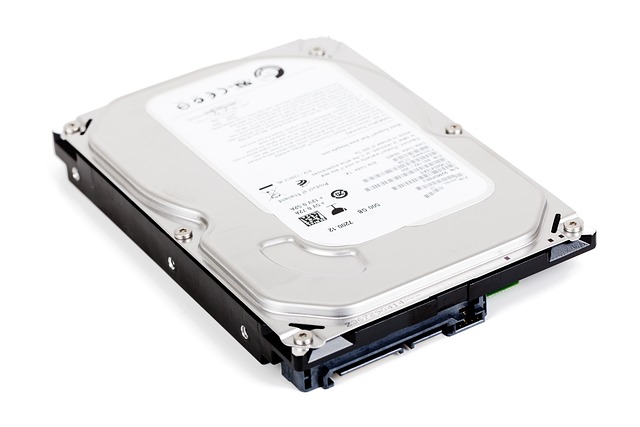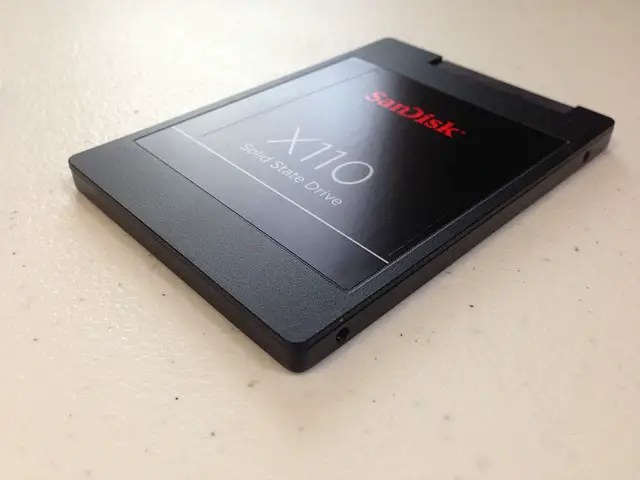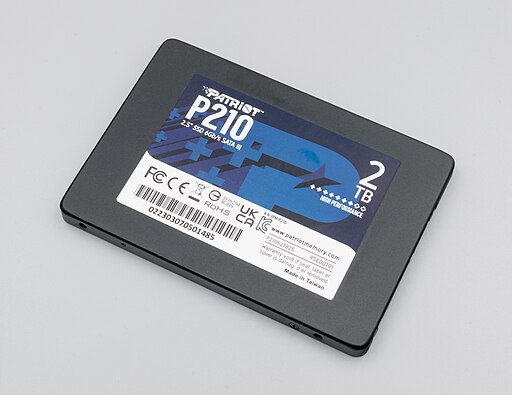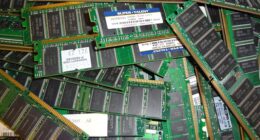A hard drive uses spinning disks for storage, slower but cheaper. An SSD is faster, using flash memory, but usually more expensive.
Hard Drive Vs. SSD
A hard drive, also known as a hard disk drive, is a traditional storage device that has been in use for decades. It consists of magnetic disks or platters that store data using magnetism.
SSDs, or solid-state drives, are a newer type of storage technology that has gained popularity in recent years. They use flash memory chips to store data, similar to what is found in USB flash drives.
What is a Hard Drive?

A hard drive is a traditional storage device that uses spinning magnetic disks to store and retrieve data. It is a non-volatile storage medium, meaning it retains data even when the power is turned off. Here are key characteristics of a hard drive:
- Components: A hard drive consists of one or more metal platters coated with a magnetic material. These platters spin at high speeds, and data is read from and written to them using read/write heads.
- Storage Capacity: Hard drives are available in various storage capacities, ranging from gigabytes (GB) to terabytes (TB) or even petabytes (PB). They offer large storage capacities at affordable prices.
- Speed: Hard drives have mechanical moving parts, which can result in slower read and write speeds compared to solid-state drives (SSDs). The speed of a hard drive is affected by factors such as rotational speed (measured in revolutions per minute or RPM) and data transfer rates.
- Durability: Hard drives are relatively more susceptible to physical damage due to their mechanical nature. They can be sensitive to shocks, drops, or vibrations, which may cause data loss or hardware failure.
- Cost: Hard drives are generally more affordable than SSDs when comparing storage capacity. They offer a cost-effective solution for users who need large amounts of storage space.
- Usage: Hard drives are commonly used in desktop computers, laptops, servers, and external storage devices. They are suitable for storing large files, such as videos, photos, and documents.
While hard drives have been the primary storage solution for many years, the emergence of solid-state drives (SSDs) has introduced a new type of storage technology with distinct advantages.
How Does a Hard Drive Work?
A hard drive is a crucial component of a computer system that stores and retrieves information. It consists of one or more magnetic disks that spin rapidly while an arm with a read/write head moves over the surface of the disk to access data.
The process of how a hard drive works can be summarized as follows:
1. The computer sends a request for data to the hard drive.
2. The read/write head locates the section of the disk where the data is stored.
3. The disk spins, and the read/write head reads the magnetic fields on the disk to retrieve the requested data.
4. The data is then sent back to the computer for processing or storage.
It’s important to understand how a hard drive works, especially considering the continuous advancements in hard drive technology. Over time, hard drives have become more efficient and capable of storing larger amounts of data. Factors such as the rotational speed of the disk and the data transfer rate significantly influence the speed at which data can be retrieved.
In a historical context, the first hard drive was invented by IBM in 1956 and had a capacity of only 5 megabytes. However, hard drive technology has evolved significantly since then, with capacities now ranging from terabytes to even petabytes. These improvements in speed and reliability have made hard drives a reliable and cost-effective storage solution for a wide range of applications.
Understanding how a hard drive works is essential for anyone looking to make informed decisions about computer storage. The continuous advancements in hard drive technology have allowed for greater storage capacities and faster data access, contributing to the overall efficiency and functionality of computer systems.
Advantages of Hard Drives
- Hard drives have the advantage of offering a larger storage capacity compared to SSDs. A typical hard drive can store terabytes of data, making it suitable for storing large files such as videos, photos, and documents.
- Cost-effective: Hard drives are more cost-effective than SSDs, especially when it comes to storing large amounts of data. They offer a lower cost per gigabyte, making them a popular choice for budget-conscious users.
- Compatibility: Hard drives are compatible with all types of computers, whether it’s a desktop PC, laptop, or gaming console. They can easily be connected using traditional SATA cables.
- Long lifespan: Hard drives have a longer lifespan compared to SSDs. They can withstand more read-write cycles and are less prone to wear and tear over time.
- Easy to upgrade: Upgrading or replacing a hard drive is relatively straightforward. It involves removing the old drive and installing a new one, which can be done by most users with basic computer knowledge.
Pro-tip: If you need a large storage capacity at an affordable price, consider opting for a hard drive. It’s a great choice for storing media files, backups, and archives.
Disadvantages of Hard Drives
- The disadvantages of hard drives include slower speed compared to SSDs. Hard drives use spinning disks to read and write data, which can result in longer loading times and slower overall performance.
- One of the disadvantages of hard drives is that they are prone to mechanical failure. Since hard drives have moving parts, they are more susceptible to mechanical failure. This means that there is a higher risk of data loss if the drive gets damaged or stops working properly.
- Another drawback is the noise and vibration produced by hard drives. Hard drives produce noise and vibration due to the spinning disks and moving parts. This can be a disadvantage in noise-sensitive environments or if you prefer a quieter computing experience.
- Hard drives also have higher power consumption compared to SSDs. They require more power to operate, resulting in higher energy consumption and shorter battery life for laptops or portable devices.
- Heating issues are another concern with hard drives. They generate more heat during operation, which can lead to overheating if not properly cooled. This can affect the lifespan and performance of the drive.
- Another disadvantage of hard drives is their lower durability compared to SSDs. The moving parts and delicate nature of hard drives make them less durable. They are more prone to physical damage, such as drops or shocks, which can cause data loss or drive failure.
- Limited capacity options are also a disadvantage of hard drives. While hard drives offer higher storage capacities compared to SSDs, the options are limited in terms of physical size. This can be a disadvantage if you have limited space or need a compact storage solution.
What is an SSD?

An SSD (Solid State Drive) is a type of storage device that uses flash memory to store data. Unlike traditional hard drives, which use spinning disks and mechanical components, SSDs have no moving parts. They are designed to provide faster data access, improved performance, and enhanced reliability compared to hard drives.
Key features and characteristics of SSDs include:
- No Moving Parts: As SSDs do not have any spinning disks or mechanical components, they are more resistant to physical shocks and vibrations. This makes them more durable and less prone to mechanical failures.
- Faster Data Access: SSDs offer significantly faster data access speeds compared to hard drives. This is because they do not rely on mechanical read/write heads to access data. Instead, data is stored and retrieved electronically, resulting in quicker data transfer rates and reduced latency.
- Improved Performance: Due to their faster data access speeds, SSDs can provide improved overall system performance. Applications and files load more quickly, and the computer’s responsiveness is enhanced.
- Compact and Lightweight: SSDs are typically smaller and lighter than traditional hard drives. This makes them ideal for laptops and other portable devices where space and weight are important factors.
- Energy Efficiency: SSDs consume less power compared to hard drives. This is because they do not require electricity to power spinning disks or moving parts. As a result, SSDs contribute to longer battery life in laptops and reduced energy consumption in desktop systems.
- No Noise: Since SSDs lack moving parts, they operate silently. There are no sounds associated with spinning disks or mechanical heads, providing a noise-free computing experience.
- Expensive per GB: SSDs are generally more expensive per gigabyte of storage compared to hard drives. The cost of SSDs has been decreasing over time as technology advances and economies of scale are realized.
SSDs offer numerous advantages over traditional hard drives, including faster speeds, improved durability, energy efficiency, and compact size. These factors have made SSDs increasingly popular in modern computing devices.
How Does an SSD Work?
An SSD (Solid State Drive) operates using a type of non-volatile flash memory to store data. Unlike traditional hard drives that utilize spinning disks and magnetic storage techniques, SSDs have no moving parts, resulting in faster and more reliable performance.
When data is written to an SSD, it is stored in memory cells. These memory cells are organized into pages and blocks. To read or write data, the SSD employs a controller to access the appropriate pages and blocks.
SSDs employ NAND flash memory technology, which consists of billions of individual cells. Each cell can hold multiple bits of data, typically ranging from one to four bits.
When data is written to an SSD, the controller electrically charges the relevant memory cells, altering their state and storing the data. When data is read from an SSD, the controller accesses the appropriate memory cells and retrieves the stored data.
SSDs offer numerous advantages over traditional hard drives, including faster boot times, shorter application loading times, and improved system responsiveness. Additionally, SSDs are more durable as there are no moving parts that can break or wear out.
Furthermore, SSDs consume less power than hard drives, resulting in longer battery life for laptops and other portable devices. However, SSDs typically have a higher cost per gigabyte compared to hard drives.
Overall, SSDs provide a faster and more efficient storage solution for both personal computers and data centers, which explains why they have become an increasingly popular choice for many users.
Advantages of SSDs
- SSDs offer improved performance with faster data access and transfer speeds.
- Tasks like booting up, launching applications, and file transfers are quicker with SSDs.
- SSDs have no moving parts, reducing mechanical failure risk and increasing reliability.
- They are energy-efficient, leading to longer battery life for laptops and lower power consumption for desktops.
- SSDs operate silently due to their lack of moving parts, ideal for quiet environments.
- They are compact and lightweight, suitable for devices with limited space.
- SSDs are more resistant to shocks and vibrations, making them suitable for portable devices.
- Improved multitasking and efficient performance when running multiple applications or accessing large files.
- Significantly reduced boot time for faster computer startup.
- Longer lifespan compared to hard drives due to the absence of moving parts.
Disadvantages of SSDs
- SSDs have a limited lifespan compared to hard drives. The number of write operations they can handle before wearing out is finite. This means that over time, an SSD may become less reliable and eventually fail completely.
- SSDs are generally more expensive than hard drives when it comes to cost per gigabyte of storage. This means that if you need a large amount of storage space, an SSD may not be the most cost-effective option.
- While SSDs have been increasing in capacity in recent years, they still generally offer less storage space compared to hard drives. If you need a lot of storage for your files, an SSD may not be able to accommodate your needs.
- Some older systems may not be compatible with SSDs, requiring additional hardware or software updates to use them. This can be a disadvantage if you have an older computer and want to upgrade to an SSD.
- If an SSD fails, it can be more challenging to recover data compared to a hard drive. This is because of the way data is stored and managed on SSDs, making it harder to retrieve lost or corrupted files.
What are the Key Differences Between Hard Drives and SSDs?
Speed and Performance
When considering the speed and performance of hard drives and SSDs, it is important to note that SSDs have a significant advantage in terms of speed and performance. Unlike hard drives, which rely on spinning disks and mechanical read/write heads, SSDs use flash memory to store data, allowing for much faster data access speeds.
SSDs can achieve read and write speeds of up to 550 megabytes per second (MB/s) or more, while hard drives typically range from 100 to 200 MB/s. This means that tasks such as booting up your computer, opening applications, and transferring large files will be much faster with an SSD, ensuring a high-speed and high-performance computing experience.
The performance difference becomes even more pronounced when it comes to random access speeds. With their lack of mechanical parts, SSDs can access data almost instantly, resulting in significantly reduced loading times and improved overall system responsiveness. This enhanced speed and performance greatly benefits users who require quick and efficient data access.
In terms of speed and performance, hard drives simply cannot compete with the superior performance of SSDs. Whether you are a gamer looking for faster loading times, a professional needing speedy data access, or simply a casual user wanting a more efficient computing experience, SSDs are the clear choice for optimal speed and performance.
It is worth noting that while SSDs offer superior speed and performance, the price per gigabyte of storage is higher compared to hard drives. Therefore, if you require a large amount of storage for a lower cost, a hard drive may still be a viable option, although it may not offer the same level of speed and performance as an SSD.
When it comes to speed and performance, SSDs are undoubtedly the superior choice. Their faster read and write speeds, along with improved random access times, make them the preferred option for users who prioritize speed and efficiency in their computing experience, ensuring a seamless and high-performing workflow.
Durability and Reliability
When comparing hard drives and SSDs, one important factor to consider is their durability and reliability. Here is a table that highlights the key differences:
| Aspect | Hard Drives | SSDs |
|---|---|---|
| Durability | Contain moving parts like spinning disks and read/write heads, making them more susceptible to physical damage from drops or impact. | Do not have any moving parts, making them more resistant to physical damage and better suited for portable devices. |
| Reliability | Prone to mechanical failure due to moving parts, which can lead to data loss or corruption. | Less susceptible to mechanical failure, providing better data integrity and a lower risk of data loss. |
Pro-tip: If you need a storage solution that offers higher durability and reliability, SSDs are the better choice. They do not have moving parts, reducing the risk of physical damage and mechanical failure. This makes them suitable for laptops, tablets, or other portable devices that may experience frequent movement or drops. If durability and reliability are not your primary concerns, and you are looking for larger storage capacities at a more affordable price, hard drives can still be a viable option.
Power Consumption
Hard drives consume more power compared to SSDs. While idle, hard drives typically consume around 3-4 watts, whereas SSDs only consume approximately 0.3 watts. During read/write operations, hard drives consume around 6-8 watts, while SSDs consume between 2-4 watts. When in sleep mode, hard drives consume around 0.3-2 watts, while SSDs consume only 0.03 watts.
The lower power consumption of SSDs has several benefits. It helps to prolong battery life in laptops and other portable devices, making them more energy-efficient. It reduces the heat generated by the device, resulting in cooler operation and potentially increasing the lifespan of the device. Lower power consumption also leads to quieter operation as there is less need for cooling fans.
When considering power consumption, it is important to note that power usage may vary depending on the specific model and usage patterns. In general, SSDs are more power-efficient compared to hard drives, making them a favorable choice for those seeking reduced energy consumption and improved overall efficiency.
Noise and Heat
When it comes to noise and heat, there are significant differences between hard drives and SSDs. Hard drives consist of spinning disks and moving mechanical parts, which can generate noise and heat during operation. The rotation of the disks creates a humming sound, and the movement of the read/write heads can produce clicking or buzzing noises. The friction between the moving parts can generate heat, leading to temperature increases inside the hard drive.
On the other hand, SSDs have no moving parts, resulting in a completely silent operation. Without any mechanical components, there is no noise generated from spinning disks or moving parts. SSDs produce significantly less heat compared to hard drives. The absence of moving parts means there is less friction, resulting in lower temperatures.
These differences in noise and heat can have implications for various scenarios. For instance, in environments that require quiet operation, such as recording studios or libraries, SSDs are the preferred choice to avoid any disruptive noise. In systems that demand cooling efficiency, SSDs can contribute to maintaining lower temperatures, reducing the need for additional cooling mechanisms.
Therefore, when considering noise and heat, SSDs offer the advantage of silent operation and lower heat generation compared to hard drives.
Capacity and Price
When comparing hard drives and SSDs, one important factor to consider is the capacity and price. Here is a table comparing the capacity and price of both options:
| Hard Drive | SSD | |
| Capacity | Up to several terabytes | Up to several terabytes |
| Price | Lower cost per gigabyte compared to SSDs | Higher cost per gigabyte compared to hard drives |
When it comes to the capacity, both hard drives and SSDs offer similar options, with both being available in sizes of up to several terabytes. This means that you can choose a storage option that meets your specific needs, whether you require a large amount of storage or a more moderate capacity.
When it comes to the price, hard drives have an advantage. Hard drives generally have a lower cost per gigabyte compared to SSDs. This means that if you require a large amount of storage at an affordable price, a hard drive may be the better choice.
On the other hand, if your primary concern is speed and performance, SSDs are known to be significantly faster than hard drives. SSDs also have other advantages such as durability, lower power consumption, and quieter operation.
Ultimately, when choosing between a hard drive and an SSD, it’s important to consider your specific needs, including the desired capacity and your budget. Assessing these factors will help you make an informed decision based on your priorities.
Which One Should You Choose?
When it comes to the age-old battle between hard drives and SSDs, the burning question remains: which one should you choose? In this section, we’ll dive into the factors that should be taken into consideration when making this important decision. From speed and storage capacity to durability and cost-effectiveness, we’ll unravel the key elements that will help you make an informed choice. So, buckle up and get ready to uncover the secrets behind the ideal storage solution for your needs!
Factors to Consider When Choosing Between Hard Drives and SSDs
- Factors to Consider When Choosing Between Hard Drives and SSDs:
- Storage needs: Consider the amount of storage you require for your files, documents, and media. Hard drives generally offer larger capacities, ranging from several hundred gigabytes to multiple terabytes. On the other hand, SSDs typically have smaller capacities, but they are constantly increasing.
- Speed and performance: Hard drives have spinning disks and mechanical read/write heads, which can cause slower load times and data transfer speeds. SSDs, on the other hand, have no moving parts and can provide significantly faster performance in terms of boot times, file transfers, and overall system responsiveness.
- Durability and reliability: SSDs are more durable than hard drives as they have no moving parts that can be damaged. They are more resistant to physical shocks and vibrations, making them ideal for portable devices. Hard drives, on the other hand, are more prone to failure due to mechanical components.
- Power consumption: SSDs require less power to operate compared to hard drives. This translates to longer battery life for laptops and lower energy consumption for desktop computers.
- Noise and heat: Hard drives can generate noise and heat due to their moving parts. SSDs, being solid-state devices, are silent and produce less heat during operation.
- Price: Hard drives are generally more affordable compared to SSDs, especially when considering larger storage capacities. The price difference has been decreasing over time as SSD technology advances.
Considering these Factors to Consider When Choosing Between Hard Drives and SSDs will help you make an informed decision based on your specific needs and preferences.
Frequently Asked Questions
What is the difference between a hard disk drive (HDD) and a solid-state drive (SSD)?
A hard disk drive (HDD) and solid-state drive (SSD) are both types of data storage devices used in computers. An HDD uses spinning platters and a moving read/write head to access data, while an SSD stores data on instantly-accessible memory chips. The main difference is the way data is stored and accessed.
What are the advantages of using a solid-state drive (SSD) over a hard disk drive (HDD)?
SSDs are faster, quieter, smaller, more durable, and consume less energy compared to HDDs. They provide faster access to large files, improving computer performance for tasks like booting up the operating system, starting programs, loading new game levels, opening large files, and importing/exporting video files.
What are the advantages of using a hard disk drive (HDD) over a solid-state drive (SSD)?
HDDs are cheaper and offer more storage capacity compared to SSDs. They are cost-efficient for long-term offline storage and are well-tested, proven technology. HDDs also offer easier data recovery if damaged, making them a reliable backup device.
How can I determine if my computer has a solid-state drive (SSD) or a hard disk drive (HDD)?
To determine if your computer has an SSD or HDD, you can type “defrag” in the Windows start search bar and click “Defragment and Optimize Drives” or type “About” in the taskbar and click “About My PC.” These options will provide information about your storage drives.
Which type of drive, SSD or HDD, is more suitable for gaming laptops?
SSDs are generally more suitable for gaming laptops due to their faster read/write rates and improved performance in loading large game files. However, it’s important to consider other factors such as budget and usage to make the best decision.
Are solid-state drives (SSDs) more expensive than hard disk drives (HDDs)?
Yes, solid-state drives (SSDs) are generally more expensive than hard disk drives (HDDs) due to their newer technology and the use of flash memory chips. However, the cost difference is decreasing over time as SSDs become more common.
Image Credits
Featured Image By – Jacek Halicki, CC BY-SA 4.0 , via Wikimedia Commons
Image 1 By – PublicDomainPictures from Pixabay








